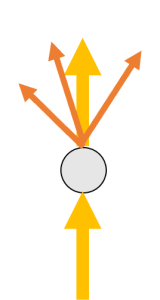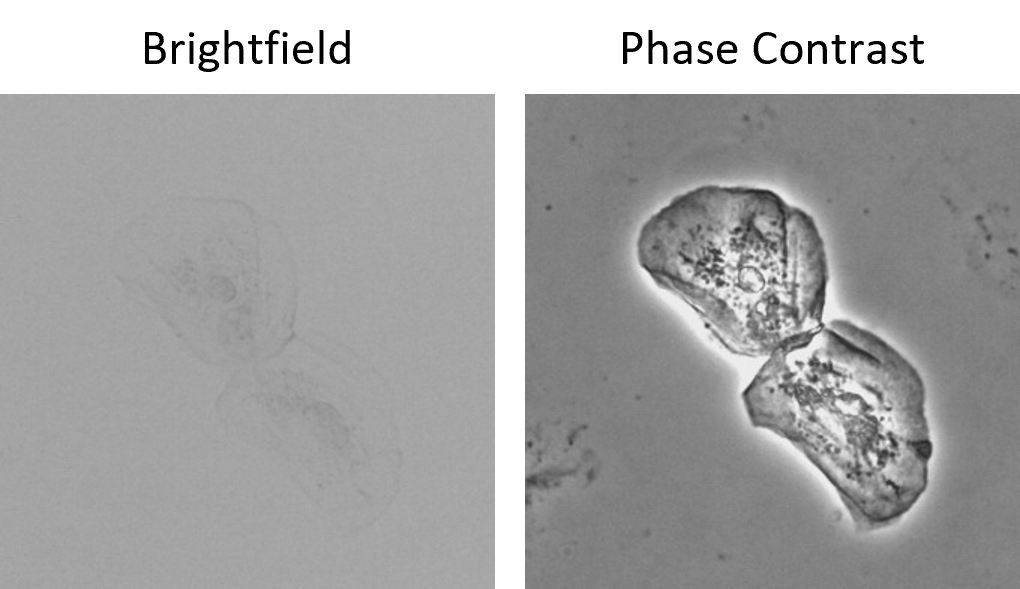4 Phase Contrast Microscopy

Phase contrast microscopy is a technique to visualize specimens that do not absorb light and are therefore not visible using standard brightfield microscopy. Even though many biological specimens do not absorb light, they do diffract (scatter) light (Fig. 1): while most light travels through the object (thick yellow arrow), some light is scattered in all directions (thin orange arrows). Edges of objects and other features (organelles, flagella, etc.) are especially good a diffracting light. Coverslip, slide, and dish surfaces are essentially featureless and therefore do not scatter/diffract light.
Phase contrast microscopy enhances objects that diffract light. Features that diffract light appear dark, surrounded by a light halo, while everything else (the slide, etc.) appears gray. Figure 2 shows two cheek cells imaged using brightfield and phase contrast microscopy. Note how the cells are nearly invisible using brightfield.

Phase contrast microscopy requires specialized microscope components: a phase ring located in a turret in the condenser and a phase plate inside the objective. Different objectives have different sized phase plates, therefore the phase ring in the condenser needs to be matched to the phase plate in the objective. In addition, the microscope must be aligned for Koehler Illumination. You will learn how to set-up the phase contrast microscope during your training.

